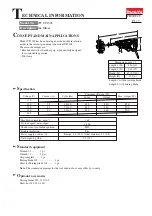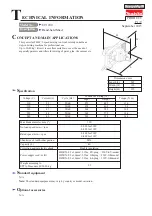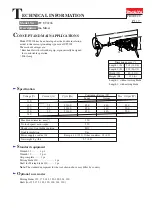
Vista 5 M3 Digital Mixing System
4-10 GC Operation
Document generated: 28.08.13
SW V4.9
4.3 Graphical Controller Basics
This chapter describes the basic concepts of the work with the graphical
controller (GC).
4.3.1
Sources and Targets
Generally, all audio signals available to the Vista can be divided into
Sources
and
Targets
. These names are used rather than ‘Input’, ‘Out put’, etc., in order
to avoid any confusion about where the audio signal comes from and goes to.
Sources:
A
Source
is anything that delivers an audio signal:
•
Digital Input Interface
(e.g. AES/EBU or MADI);
•
Analog Input Interface
(e.g. HQ mic/line input);
•
Channel Output
(for example, direct output of input channel #24, master
output, etc.);
•
Channel Insert Send
;
•
Bus Output
(unlike with analog consoles, any bus is a valid audio signal
source within Vista; for example, AUX Mono Bus 12 can be used to feed
an output interface, or to become the source to an input channel);
•
Test Generator
.
Targets:
A Target is anything that can receive one (mono or stereo) audio signal:
•
Channel Input 1
(first audio input to a channel; free for all input channels.
It is used to connect Sources to input/track monitor channels, such as a
MADI output from a digital multi-track to a track monitor channel, or the
corresponding bus to an output channel, such as a Group, Master, or AUX
channel);
•
Channel Input 2
(second audio input to a channel; free for all channels);
•
Channel Input 3
(third audio input to a channel; used for the test generator
connection per default, can be re-patched to any source at any time),
•
Channel insert returns
;
•
Digital output interfaces
(e.g. AES/EBU or MADI);
•
Analog output interfaces
.
Sources and Targets implicitly behave as mono or stereo, depending on their
character. A
stereo
Source or Target can be treated, nevertheless, as consis-
ting of two
mono
parts. Any Source can be connect ed to as many Targets as
needed via the General Patch page. However, a Target (stereo or mono) can
have only one Source (stereo or mono) assigned to its input.
4.3.2
The Session Configuration
The
Session Configuration
is the physical and electrical definition of the
Vista Digital Mixing System installed at your recording studio or production
facility. A Session Configuration contains data about the mixing console
channels, the patch, the labels, and so on – and it
must
be loaded in order for
the console to function.
We often refer to the
Virtual Mixing Console
(VMC)
when speaking about
the Session Configuration. VMC is another concept that forms the basic
foundation of a Vista: all functions and the current Session Configuration
Summary of Contents for Vista 5 M3
Page 18: ...Vista 5 M3 Digital Mixing System 1 2 Introduction Document generated 28 08 13 SW V4 9 ...
Page 40: ...Vista 5 M3 Digital Mixing System 1 24 Introduction Document generated 28 08 13 SW V4 9 ...
Page 90: ...Vista 5 M3 Digital Mixing System 3 2 Parameters Document generated 28 08 13 SW V4 9 ...
Page 144: ...Vista 5 M3 Digital Mixing System 3 56 Parameters Document generated 28 08 13 SW V4 9 ...
Page 300: ...Vista 5 M3 Digital Mixing System 5 4 AutoTouchPlus Document generated 28 08 13 SW V4 9 ...
Page 348: ...Vista 5 M3 Digital Mixing System 5 52 AutoTouchPlus Document generated 28 08 13 SW V4 9 ...
Page 506: ...Vista 5 M3 Digital Mixing System 7 2 DAW Control Document generated 28 08 13 SW V4 9 ...
Page 516: ...Vista 5 M3 Digital Mixing System 7 12 DAW Control Document generated 28 08 13 SW V4 9 ...
Page 518: ...Vista 5 M3 Digital Mixing System 8 2 RELINK Document generated 28 08 13 SW V4 9 ...
















































